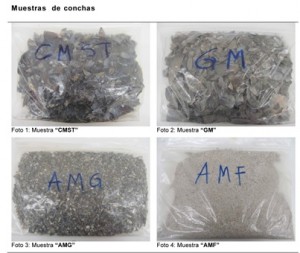2015 May 8
Mollusc Shells as a Building Material: the New Project Led by Extraco
Extraco is currently leading a business consortium which, together with research centres of reference in Galicia, such as the CITEEC (Centre for Technological Innovation in Building and Civil Engineering) and the Construction Group of the University of A Coruña, is developing an innovative RDI project aiming at giving more value to mollusc shells, using them as a building material. This initiative, known as “Proyecto Biovalvo” (“Bivalve Project”), is also funded by the CDTI (Centre for the Development of Industrial Technology), dependent on the Spanish Ministry of Economy and Competitiveness.
At present, bivalve shells, which are mainly made of calcium carbonate, still end up in landfill sites, instead of being reused. In view of the energy and economic costs derived from grinding rock to obtain aggregates for construction, the possibility of using shells for granular applications was suggested by the research team.
The project, which is receiving much attention from the media, proposes mussel shell as the raw material of reference, since it accounts for more than 70% of generated waste, ranking above cockle and oyster shells. Instead, it would be used for the construction of foundations, drainages or mortars intended for different purposes, thanks to its high insulation capacity.
In this regard, the characteristic flat shape of shells must be highlighted, since it allows aggregates to get compressed and generate macropores that hold the air inside. This particular characteristic lends significant thermal insulation properties to the material, making it comparable to different types of expanded clay or light wood. In addition, the pore size makes crushed shells a suitable product to be used in drainage elements.
Proyecto Biovalvo is aimed at the development and environmental assessment of the best uses to make the most of this material. For instance, it could be used in bituminous mixtures, mortars and concretes (with regard to overlays mixed with bonding agents), act as an insulating material, filling for laying of foundations or in drainage elements, and road-surface layers with unmixed applications (granular-type).
The studies carried out to date suggest that insulating and drainage properties are the main characteristics that set traditional aggregates apart from aggregates made of crushed mollusc shells.
Galicia is the perfect place for the development of Proyecto Biovalvo, since its aquaculture and seafood industries stand out at a global level for achieving very high production results: the mussel industry generates 200,000 tonnes of waste per year, with the province of A Coruña in the lead (its production accounts for 65% of the total volume).
Back

